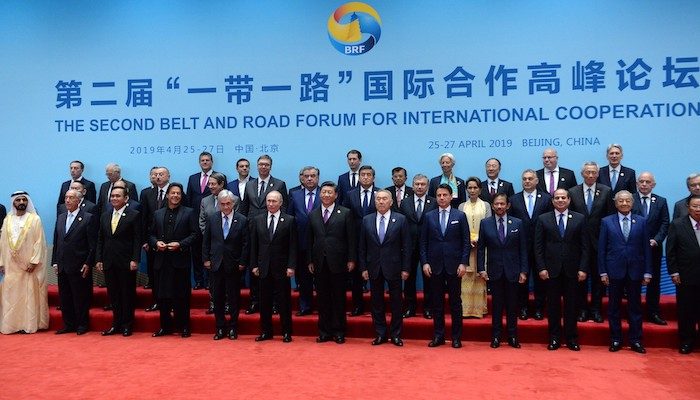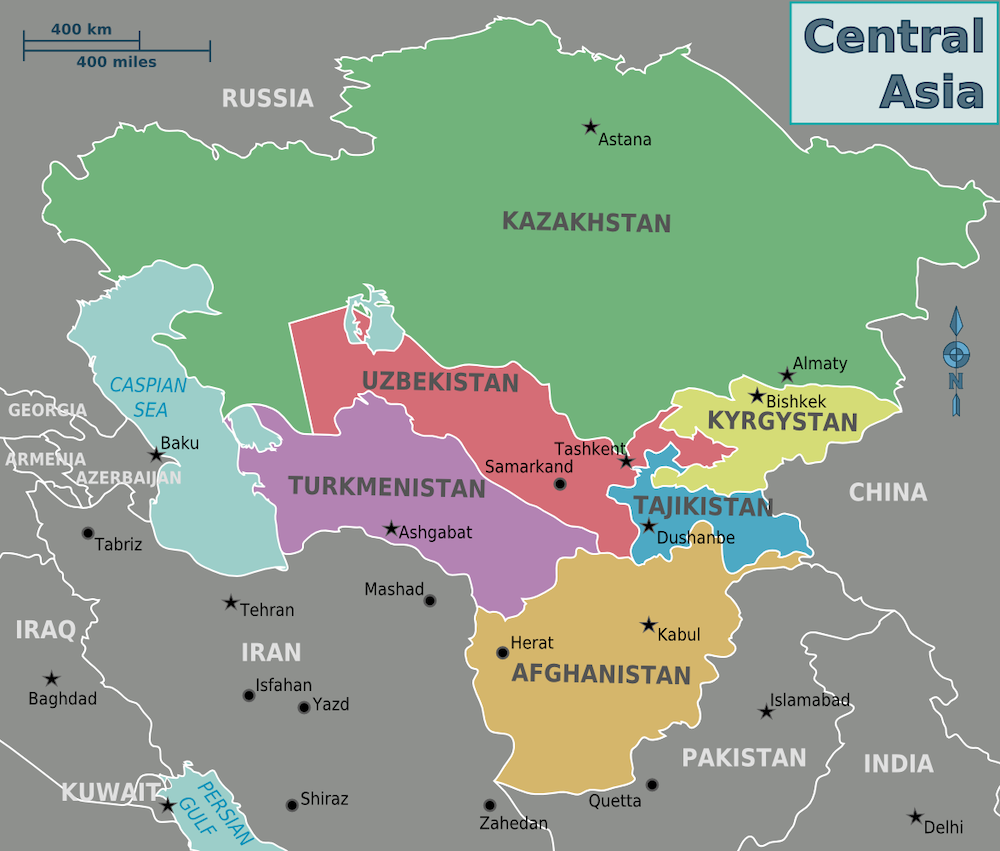
In September 2013, Chinese President Xi Jinping first announced his strategic vision of “One Belt, One Road” (subsequently renamed the “Belt and Road Initiative” or BRI) during a speech at Nazarbayev University in the Kazakh capital. In essence, the BRI is a massive Chinese project, involving more than 130 countries, over $600 billion in existing commitments, and a total price tag estimated in the trillions of dollars, to redevelop the ancient Silk Road trade routes running between China and Europe. In his speech at Nazarbayev University, Xi suggested that China and Central Asia cooperate to build “the Belt,” the continental part of the Chinese vision, as opposed to “the Road,” the maritime segment. The choice to unveil this enormous project in a country with a relatively low international profile suggests the significance that China attaches to Kazakhstan specifically as well as the broader region in which it is situated. Indeed, Central Asia and the South Caucasus will be a key part of the BRI and home to a number of major associated projects.
A quick look at the map underscores the importance of Central Asia and the South Caucasus in the context of an initiative seeking to connect China to Europe by rail and road. The China-Kazakhstan border is China’s longest on its western side, and it also borders Kyrgyzstan and Tajikistan. Together with Afghanistan and Pakistan, these countries form its western border, connecting China by land to the Middle East, the Mediterranean, and then to Europe. While Pakistan and Afghanistan are similarly situated, not only are they more southerly, which would likely make for a longer route, they also suffer from greater security concerns and political instability than the other countries to their north. It is not surprising that Central Asia will host one of the main routes connecting China and Europe under the BRI, known as “the China-Central Asia-West Asia Economic Corridor.” This route runs from Urumqi in China’s north-west through Almaty, Bishkek, and Tashkent. In Tashkent the path splits, with one part heading north to Aktau, on the eastern shore of the Caspian Sea, and the other heading south to Ankara and Bandar Abbas on the southern coast of Iran. On the other side of the region, the South Caucasus will also be central to the Chinese initiative, especially Georgia, given its location on the Black Sea coast, which serves as the connection point on to Europe. On May 24, 2019, Chinese Foreign Minister Wang Yi visited Georgia and met with his Georgian counterpart as well as the country’s president. Wang emphasized Georgia’s important role in the BRI, arguing that it could serve as a major transport and logistics hub between Europe and Asia. In April 2018, Georgian Deputy Prime Minister Dimitri Kumsishvili held meetings in China with Chinese Transport Minister Li Xiaopeng and Trade Minister Zhong Shan, during which several agreements were signed.

Image by
For countries in Central Asia and the South Caucasus, the Chinese initiative may allow them to benefit from significant economic and infrastructure upgrades as a result of their proximity to the world’s second-largest economic power and the many projects that are already in the works and may be built within their borders in the future.
First, because these countries do not have direct access to the ocean and major maritime shipping routes, which greatly impedes trade flows, China’s plans to lay railways and pave roads as part of the BRI’s “Belt” could go a long way toward improving their connectivity. The current transportation infrastructure in many countries in the region is lacking, and the BRI could help to facilitate inter- and intra-state movement of goods and people as well as alleviate the burden placed on local governments to fund much-needed domestic projects. Indeed, some projects are already underway or even completed. For example, work on the Wahdat-Yovon railroad, built by Chinese railway construction enterprises in central Tajikistan, began on May 15, 2015, and it opened to traffic on Aug. 24, 2016. The same construction firms also built a railway tunnel in Uzbekistan, the Angren-Pap Tunnel, which opened for traffic in June 2016. While projects such as these will undoubtedly have a transformative effect, it worth keeping in mind that maritime transport will still remain much cheaper than rail: a large freighter can transport over 20,000 containers, compared to only a few hundred on a train. Second, the BRI initiative could help to create jobs and boost tax revenues from both the projects that will be implemented as well as the future use of the routes to be built. Kazakhstan, for example, could receive a potential $5 billion transfer fee each year from the goods passing through it to other markets. In addition, the projects will have a multiplier effect when it comes to attracting foreign investments, not necessarily just from the Chinese. Third, the states of the region could benefit from broader cooperation on a common project like the BRI, which may help to reduce tensions and strengthen ties. As regional integration is still in a nascent state, BRI would offer a host of additional opportunities to bind the region more closely together.
The BRI is expected to bring significant challenges as well. As with any large-scale project, there are a host of potential negative externalities to factor in. First, there’s the possible impact on the environment. Some of the projects included in the BRI traverse ecologically important areas that lack adequate protection, presenting a wide range of risks to the local environment and social fabric. Second, the economic calculus may be more complicated than it initially appears. Closer integration with global trade routes could also mean more foreign competition, potentially threatening local jobs and industries. In addition, in many cases, Chinese companies bring their employees with them, meaning the projects may not create as many jobs as the host countries imagine. Third, one of the biggest concerns when it comes to the BRI — as has been borne out by cases like Sri Lanka — is the risk that countries may end up taking on more debt than they can handle to build projects under the initiative. In such cases, the argument goes, the BRI could end up being less of a “golden opportunity” as Xi described it and more of a debt trap for countries that participate. The inability of a host country to meet the loan terms China offers could result in national revenue streams or assets being turned over to Chinese management and/or ownership, which would raise significant concerns about state sovereignty. This is precisely what happened in Sri Lanka: It racked up an unsustainable debt burden of over $8 billion to Chinese construction firms building the port of Hambantota, prompting the government to grant China a 99-year lease on the facility at the end of 2017.
As one would imagine, the geopolitics of a massive international project like the BRI are complicated. In the Central Asia and South Caucasus region, Russia has historically played an outsized role, and it retains an active presence, both overt and covert. The possibility of greater Chinese involvement could help to strengthen these countries vis-à-vis Russia and provide a strategic hedge by enabling them to diversify their relationships with major international powers. For its part, Russia continues to cast a covetous eye toward Central Asia, which it lost control of following the collapse of the Soviet Union, and Moscow aspires to expand its influence once again. One of its tools of influence in the region is the Eurasian Economic Union (EEU), established in 2015 which includes Belarus, Kazakhstan, Kyrgyzstan, and Armenia.
But China and Russia are not alone; the U.S. too has an interest in the region. Indeed, Central Asia, home to important trade routes and rich in natural resources, is one of the focal points in the competition between the three powers for regional influence. For the U.S. this is especially important in light of the 2018 National Defense Strategy, under which the American military has shifted its main focus from counterinsurgency to great power competition. Central Asia’s geographic location, between China and Russia, makes the area even more strategic for the U.S. as it can gain an advantage on China and Russia by increasing their influence in the region.
In order for the countries of the South Caucasus and Central Asia to benefit from the BRI, regional cooperation must be deepened and accelerated so that they can reap the rewards of greater connectivity to neighboring and global markets, while also helping to mitigate the initiative’s not-insignificant negative effects. This strategy will ensure regional coherence, learning, and leverage of the opportunities offered by the BRI. Nationally, however, each state must first defend itself at the economic level, act with full transparency with local citizens, and not commit to projects it cannot pay for, thereby risking its sovereignty. At both the social and environmental levels, countries must have a clear strategy on how to deal with the implications of the Chinese initiative and manage cooperation between regional states. For example, countries should consider ways to compensate or help businesses and employees that may be harmed by the BRI.
By greatly improving regional and international connectivity, the BRI could be a tremendous opportunity for the countries of Central Asia and the South Caucasus to fuel economic growth, link up to global trade networks, and enhance regional cooperation. However, maximizing the benefits of the BRI while minimizing the costs will also require them to maintain a careful balancing act, with an eye to ensuring their sovereignty and the well-being of their economies and citizens is properly safeguarded.
Further Reading on E-International Relations
- Opinion – China’s Belt and Road Initiative: Pragmatism over Morals?
- China’s Belt and Road Initiative: Debt Trap or Soft Power Catalyst?
- Challenge or Opportunity? EU-China Economic Cooperation and the Belt and Road Initiative
- Deciphering the Belt and Road Initiative
- Assessing Securitization: China’s Belt and Road Initiative
- Can China Link the Belt and Road Initiative by Rail?